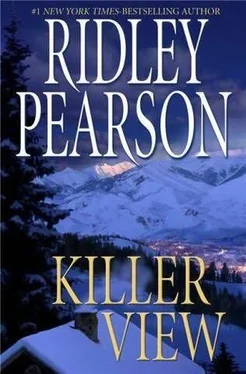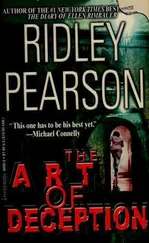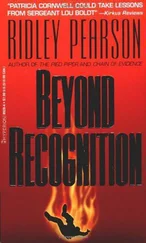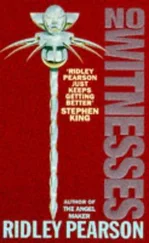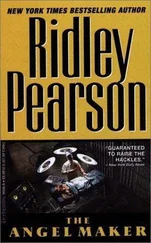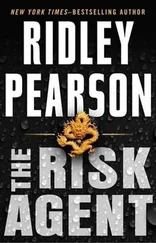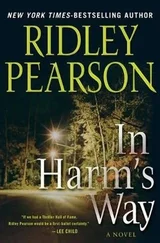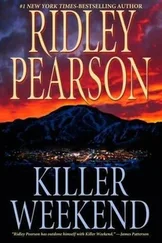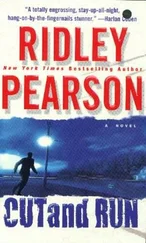Walt tried the doorknob: locked.
The ram took out the hardware and the door swung open. Walt tossed the grenade inside and his team turned their backs. The flash and bang would momentarily blind, deafen, and typically physically stun anyone within the confined space where it detonated.
His team charged through the door, led by Noland. Walt brought up the rear. The space was small-a living area, a bathroom, and a single bedroom. It all looked familiar to Walt from the webcam video.
“Clear!” his men announced as they inspected the closets and rooms. They moved on to stun-bomb a crawl space, the hatch for which was found cut into the floor in the bedroom closet. It too proved to be empty.
By the time his men reconvened in the central living area, Walt had the two webcams in a pouch on the inside of his windbreaker.
“We’ll get that door closed as best as possible. Bring in Fiona and forensics. We’ll watch the road-both directions-and keep the house under round-the-clock surveillance. Questions?”
“Sheriff?” It was Noland, calling from the galley kitchen.
Walt faced the refrigerator, where a number of postcards, bill reminders, and hand-scrawled notes had been attached with various pieces of a magnetic poetry set.
| energy | and | persistence | conquer | all | things |
“It’s Benjamin Franklin,” Walt said, consumed by the subtext: Roy Coats was a determined man.
“Not that,” Noland said. He pointed to a photocopied collage of snapshots. Handwritten at the bottom, it read: “Thanks for the guiding. Happy hunting!-Ralph.” The center picture showed three men with rifles in their hands, standing in front of a rustic cabin. The cabin was small, with an outbuilding on the right in the photo. Walt picked Coats out immediately, recognizing him both from the driver’s license photo he’d pulled and by the fact he was the biggest among the three: a burly man with a full beard who looked as if he hadn’t showered for weeks. The rifle he held was smaller than those held by the others, a modified.22-a dart rifle, Walt guessed. The small-gauge rifle Walt had heard on two separate occasions, losing a friend both times. The center photograph was surrounded by five other snapshots, three of which featured the cabin or what appeared to be its outbuildings. In each of the three, the landscape rose in the background; and, in two of these, the background was jagged mountains.
“Plain-sight search,” Walt told his deputy. “I want any other photographs of this cabin we can find.” He tapped the collage. “I want property tax records for every county in the state, starting with ours and working out through connecting counties, cross-checked for anything owned by Coats. Get on the horn and get that started. It’s damn good work, Noland.”
“Yes, sir.” Noland hurried off, a slight spring to his step.
Walt studied each of the photos carefully. When combined, they presented about three-quarters of a panorama. But it was the two that showed the distant mountains that most captivated him. His index finger traced the line of the peaks against the cobalt blue sky. There were ranges he knew the look of by heart, though admittedly only from one or two angles, typically from a road or similar perspective. Put him on the opposite side of the same range and he wouldn’t recognize it. It didn’t come as a surprise that he couldn’t identify this particular range, though it was certainly a frustration.
Again, Walt traced the silhouetted line in each of the photos where the mountains met the sky.
“Maps!” Walt called out, a little too loudly for the small space. He stood and addressed his small team. “I want any maps, any photos. We’re abandoning plain-sight search. I want everyone wearing gloves. We toss the place, but neatly , gentlemen. Carefully. And put back everything the way you find it.”
He caught himself holding his breath as he watched his men take to the search, a little too eagerly as always.
Coats stood in the center of the middle photograph.
WALT DIDN’T LIKE TO THINK THAT CHANCE PLAYED A ROLE in his work. He’d spent too much time in continuing education seminars, field exercises, and classrooms to put much credence in the flip of a coin or happenstance. But, more than that, it was the issue of control. He’d been trained to control the investigation, not to allow the investigation to control him. So as he entered the women’s side of his decrepit jail-two cells on the northeast corner of the small cellblock-and found Taylor Crabtree engaged in a video game, he fought to accept that a possible solution to this investigation could just materialize out of thin air.
A local film star had donated his son’s outdated PlayStation and a dozen games for the entertainment of the inmates. Crabtree was engaged in combat with guns blazing, a pair of headphones over his ears. Walt could hear the dull zing and pop of explosions through the headphones. He caught a glimpse of the screen, a small computer monitor. It showed a landscape like Afghanistan, rugged high desert; it showed a distant mountain range, angular against a bomb-flashing sky.
The thing was: that landscape looked impossibly familiar. Not all that different than many parts of Idaho.
Walt grabbed the cell bars with either hand.
He knew how to find Coats’s cabin.
THE COMMAND CENTER ’S scarred oval conference table held four computers, including the one confiscated from Crabtree’s RV. Walt studied the intent faces of the four boys at the keyboards: Crabtree; Walt’s nephew, Kevin; a boy of sixteen named Wilder; and one other, Jason. Jason and Wilder had been recruited from the Alternative School by Crabtree; he knew them to be serious gamers.
As he passed Kevin, Walt ruffled his hair and patted him on the back. The idea had come to Walt as he’d witnessed Crabtree at the PlayStation, the Afghan mountain ridges slipping past. The boys were all currently using the satellite imaging software, Google Earth, in an attempt to reconcile the distinct ridges seen in the refrigerator-collage photographs with the true Idahoan landscape. The boys, experts with either a joystick or mouse, could place themselves into Google’s virtual landscape, tipping the horizon, zooming in or out, and even spinning a full three hundred and sixty degrees around a single point, while attempting to match the skyline in the photos to the satellite imagery.
With thousands of mountain peaks to compare, this task might have proved interminable, but Crabtree had further contributed with a simple observation: four of the peaks were snow-topped. Three of the four photos were time- and date-stamped, as was the postcard itself. A phone call to the Forest Service, followed by a second call to the National Interagency Fire Center, in Boise, which tracked snow cover, put the elevation of the snow line at nine thousand feet on the day the snapshots had been taken nearly a year earlier.
Walt’s staff had narrowed the candidates by marking all mountain peaks over nine thousand feet on a topographic map; they narrowed it further by color-coding any ranges that contained three such adjacent peaks within a twenty-mile radius.
Now, with twenty-one circles drawn on the map in overlapping rings, the boys were working the computers, using Google Earth, trying to match horizon for horizon-the photographs to the computer screens.
It would have taken Walt’s deputies hours to understand and control the Google software; the boys were at it in minutes. He walked around the table, watching over the boys’ shoulders. To the untrained eye, the images moved quickly. It felt as if he were flying down to ground level and spinning around, eyes wide open. More than once Walt wanted to tell the kids to slow down, but their eyes worked differently than his, their motor control tied to the mouse or joystick: where he saw a blur, they saw distinct images.
Читать дальше
